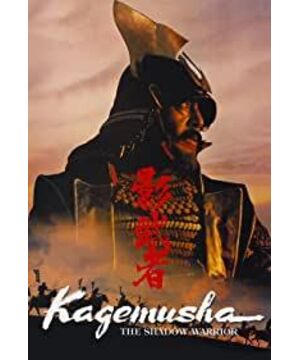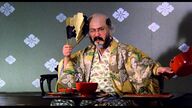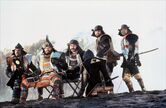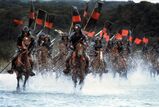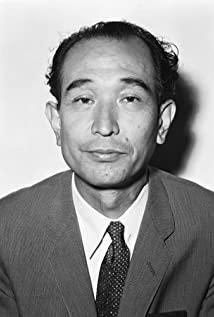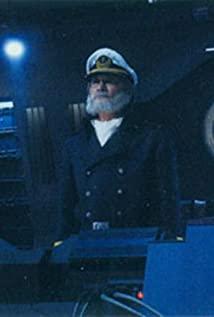This film review has been put on hold. On the one hand, I don't know how to write in the face of such a magnificent novel. On the other hand, I feel too much after watching the three-hour movie. I have been writing short reviews before, but this time I decided to write a long review.
First of all, I was very fortunate that I not only found the subtitles of the film, but also found a subtitle track of a film review, which was analyzed almost scene by scene, and finally led to a three-hour movie that I watched for almost six hours. It can be said that It is the longest movie I have watched since I watched it, but I have gained a lot. I have learned a lot of movie knowledge, and I have gained a lot of understanding of Akira Kurosawa, and I have become Akira Kurosawa in one step. Brain powder hhh.
Back to the movie below. As the third color film of Akira Kurosawa's career, he has been able to use color very skillfully, which has a lot to do with his background as an artist. This can be seen not only from Akira Kurosawa and his strong use of colors, but also from the almost painting-like photography, such as the colors when Takeda's army was evacuated, and the scenery when the "Shadow Warrior" was dreaming, all of which are very typical. . In addition to the use of colors, there is also the use of Noh and Noh. Akira Kurosawa should like watching Noh, a traditional Japanese art form. Of course, this is also in line with the preferences of the daimyo in the Warring States Period. In fact, there are not many places where Noh music is used in the film, and there are not many places where Noh music is used as background music. As a Chinese, naturally, I don’t know much about Noh music, but Akira Kurosawa is The ability to combine Noh music with film is very good. I think it is very suitable for domestic filmmakers to learn from it, that is, how to combine traditional dramas from various parts of China with the comprehensive art form of film. As for the Noh drama, the scenes used are relatively simple, but Akira Kurosawa gave a lot of shots and close-ups, especially the part where Oda Nobunaga mourns Takeda Shingen. Through Noh drama, the feeling of "hero cherishes hero" fully manifested. Of course, the extensive use of Noh and Noh drama is not only Kurosawa Akira's personal preference, but also aggravates the drama of the film (this drama is inherent in the film itself, not because of "Donkey Gets Water" The deliberate performance of the actors), which makes this kind of creation based on real history come with a surreal meaning. I personally think that part of this deliberately dramatic performance stems from Akira Kurosawa's love for Shakespeare, and also reminds the audience that this is just his own film, not real history. This point can also be seen from another hobby of Akira Kurosawa, that is, Akira Kurosawa often makes the camera skip certain major events directly, and at most retains the sound, such as the final battle, and did not shoot How the "Fenghuolin" troops were annihilated, but instead pointed the camera at the hair thief (Shadow Warrior) and observed his reaction, Kurosawa really liked it very much. As for photography and composition, these have already been said to be rotten. A large number of static photography, clean composition, and spectacular scenery really retain the deep inside and ensure enough outside. His films are indeed textbook-style. model. Now I feel more and more that Zhang Yimou's imitation of Akira Kurosawa is really a poor imitation. In the end, he did not set his own example like Akira Kurosawa, but this "clumsy" is still much better than many other domestic directors.
After talking about the outside of the movie, let's go back to the inside of the movie. First of all, for Akira Kurosawa personally, this is his third color film, which was released in 1980, behind the investment of two of Akira Kurosawa's biggest fans in the United States, Spielberg and George Lucas. The last film was "Dersu Uzala" released in 1975. The basic team except Akira Kurosawa was all Soviets (but a Japanese director could be admired by filmmakers from the two great powers of the Cold War at the same time during the Cold War, As far as I know, this is the only one). The last Japanese film dates back to the "Tram Mania" released in 1970. Although it was its first color film, it lost a lot in the end. This also directly led to Kurosawa Akira having no film to shoot for quite a while and even cutting his wrists to commit suicide later, but fortunately he survived. . . It is precisely because of the idea of "Shadow Warrior", but because of the inability to shoot, I can only use a brush to draw the picture in my mind on paper, which is why the camera lens of the film can be like a painting. In addition to the fact that Akira Kurosawa was interested in filming this history, it was precisely because of the anxiety of not being able to make a movie that Akira Kurosawa was more concerned about the destruction of Takeda Shingen himself and his family. In the process, Akira Kurosawa projected his anxiety onto Takeda and the Takeda family to a considerable extent. Historically, Shingen did not move towards Kyoto, but Shingen in the film is full of yearning for Kyoto and reunification. Is Akira Kurosawa eager to make movies? In addition, it is especially worth mentioning the relationship between Xinxuan and his son Shenglai in the film. In the film, after the death of the real Xinxuan, Shenglai is more and more dissatisfied with his situation, especially after he sent troops without authorization. Come to wipe your ass, the title of the film is obviously "Shadow Warrior", but it took a lot of space to shoot Sheng Lai, and even the end is a battle led by Sheng Lai. Personally, Akira Kurosawa's anxiety is not only about his inability to make movies, but also about the anxiety about the Japanese film industry (since I am not very familiar with Japanese movies in the 1970s and 1980s, it can only be regarded as a glimpse of the leopard). The Shingen and Katsurai in the film are like Akira Kurosawa and the younger generation he saw. The retainers, shadow warriors, and last words are like the legacy that Akira Kurosawa hopes to leave to the Japanese film industry. But in the end, after three years had passed, the shadow warriors were quickly driven away, and Katsurai was even more eager to attack the city. It can be seen that the younger generation of the film industry at that time had great resistance to the content shot by the filmmakers of Kurosawa's generation. deep. It can be seen that Akira Kurosawa transformed the dynamic change in history into a dynamic change in his own psychology. This is not only reflected in "Shadow Warrior", but also has almost similar techniques in the later "Ran".
After talking about Kurosawa Akira's personal psychological motivation, let's talk about the presentation of "Shadow Warrior" from a macro perspective. Why is this movie special? Especially for Akira Kurosawa, because the value orientation of this film is almost completely contrary to the value orientation presented by Akira Kurosawa's previous films. A typical example is "Seven Samurai", which is a relatively pure hero film. The depiction of the samurai in it is three-pointed. It maintains doubts about the social system and praises heroes and personal will, and the expression of emotions is very abundant. . But looking at "Shadow Warrior", Kurosawa's emotional expression has become more restrained, and all kinds of emotions are hidden under the characters' behaviors and expressions. It also shows the decline of the samurai class. This film can be regarded as an anti-hero film to a certain extent. Akira Kurosawa, uncharacteristically, did not criticize the social system, but instead emphasized the power of the system and norms. This is from the beginning of the film. It can be seen that although the seats of the three are high and low, Xin Xuan's shadow will be higher, higher than all, and what is higher than the shadow? It is the logo of the Takeda family, and throughout the film, the logo of the Takeda family is everywhere, and always at the top. In addition, the shadow warrior in the film is just a thief, but after identifying the beliefs of Xinxuan and the Takeda family, he imitated Xinxuan very naturally. It was almost as if Xinxuan possessed a body, and it was impossible to distinguish whether it was true or false, and there were others including Xinxuan. The same is true of the younger brother, not to mention the flags such as "Mountain as a Mountain", "Fenghuo Forest" and so on. So, does the shadow warrior refer to the shadow warrior of Xinxuan? Maybe Xinxuan himself is also a "shadow warrior" of something, so is Mao thief, and so is Xinxuan's younger brother. It is precisely under this kind of thing that personal will is almost crushed, and there is no real hero. What is this kind of thing? ? I think this is the system that Kurosawa Akira had always suspected but now believes even more strongly. Under a strong system, the Takeda family can defeat Ieyasu and Nobunaga and march to Kyoto. Even if Shingen himself dies, he can still be "moving like a mountain" and make the enemy feel fearful. This is the power of the system. And when the system collapses, the mountains will disappear, the so-called heroes will appear, and the Takeda family will naturally decline. . .
Last but not least, Akira Kurosawa's use of the past to satirize the present. Of course, this is not very certain, and can only be discussed in general terms. That is, how do shadow warriors imitate Shingen? It is imitated by various postures, but its inner peace cannot be achieved by pure imitation of shadow warriors. Personally, it is very inclined to imply satire on modern Japanese politics, that is, Japan's current politics are mostly "shadow warriors". But there is no real "Takeda Shingen".
View more about Kagemusha reviews


